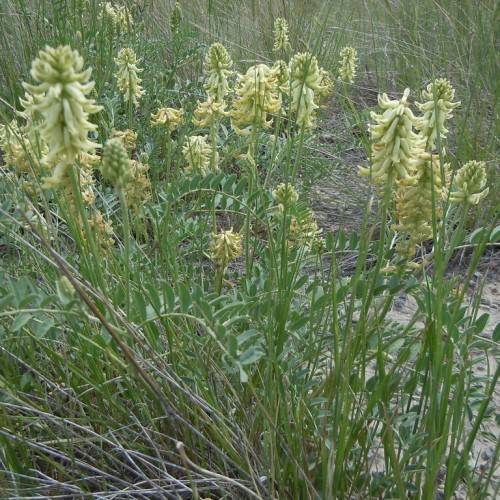
Cooper's Milkvetch
Astragalus neglectus
Watering:
Frequent
Hardiness Zone:
Sun:
full sun,part shade
Fruits:
Fruits Ready In Fall
Leaf:
Yes
Growth Rate:
Low
Drought Tolerant:
Yes
Salt Tolerant:
Yes
Care Level:
Medium
watering
Water Timber Milkvetch often enough to keep the soil moist, but not wet, throughout the growing season. In general, water the plants once a week, either by hand or with an irrigation system, so that the soil is moist to a depth of 8-12 inches. Plants in sandy soils will need more frequent irrigation. For container plants, water thoroughly when the top inch of soil is dry, typically every other day. During hot weather or in very dry climates, consider adding an additional weekly watering. During the winter, irrigation is not typically necessary.
sunlight
Timber Milkvetch requires 6-8 hours of full sun to thrive. This full sun exposure should be sustained on a daily basis, as periods of shading can affect the plant's growth. Ideally it should receive full sun during the morning or mid-day hours when light intensity is higher. Timber Milkvetch should be planted in an area that receives morning sun and afternoon shade, but will still tolerate full sun throughout the day.
pruning
Timber Milkvetch (Astragalus miser var. serotinus) requires light pruning no more than once per year, typically in late summer or early fall. This should be done after flowering has stopped by removing dead,Non-flowering wood at the base of the plant. Prune up to half of the stems at the crown and remove any side shoots from remaining stems. In harsher climates, Timber Milkvetch should not be pruned until late fall or early winter.
